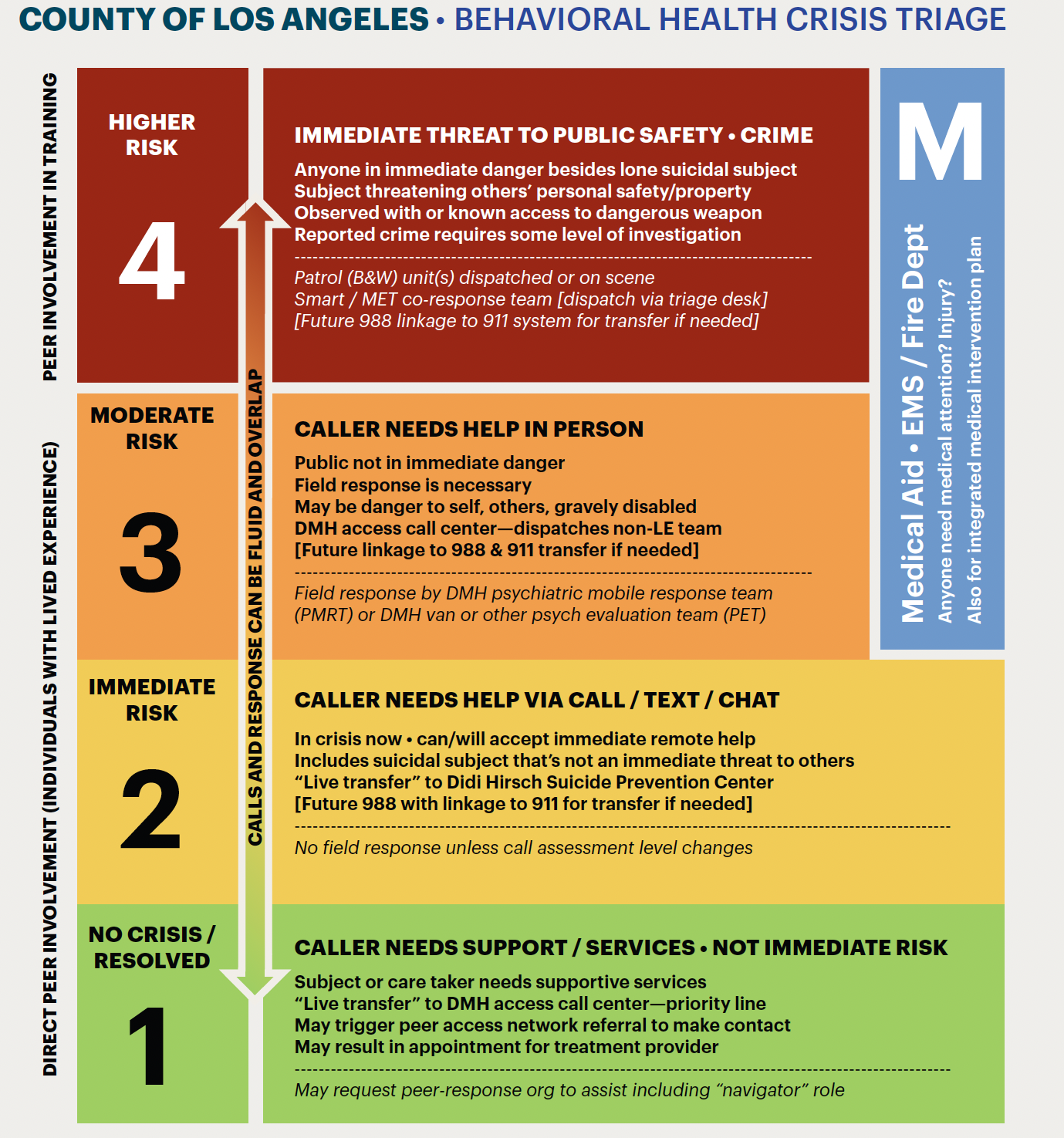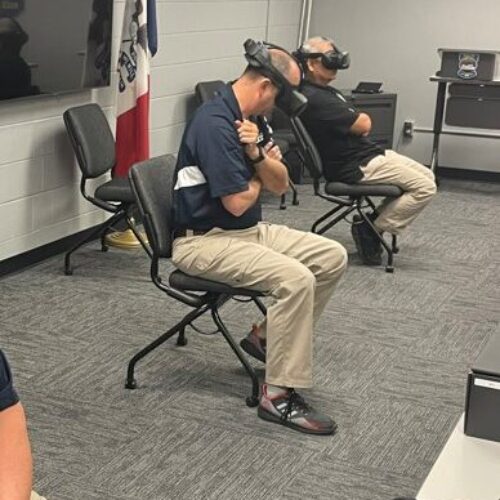911 Dispatch Call Processing Protocols: Key Tools for Coordinating Effective Call Triage
When a 911 call for service is received, dispatch center staff need to make quick decisions about which agency—law enforcement, fire, or emergency medical services—will respond to the call. The dispatcher also has to decide which type of response is appropriate. A call triage protocol is one essential tool for guiding the response to these calls. Processing guides include policies and procedures that outline the roles and responsibilities of all public safety answering points staff and offer guidelines for scenarios that officers and dispatch staff may encounter. This brief explains the benefits of these guides and provides examples from jurisdictions.
911 Dispatch Call Processing Protocols: Key Tools for Coordinating Effective Call Triage
When a 911 call for service is received, dispatch center staff need to make quick decisions about which agency—law enforcement, fire, or emergency medical services (EMS)—will respond to the call. The dispatcher also has to decide which type of response is appropriate. This can be complex, as law enforcement agencies and their partners have implemented a range of alternative interventions to respond to behavioral health calls, such as crisis intervention teams, mobile crisis units, co-response teams, community responder programs, and more.
A call triage protocol—commonly known as a processing guide, decision tree, or flowchart—is one essential tool for guiding the response to these calls. Processing guides include clearly written policies and procedures that outline the roles and responsibilities of all public safety answering points (PSAP) staff and offer specific guidelines for scenarios that officers and dispatch staff may encounter. Call processing guides are needed to fully maximize the effectiveness of police-mental health collaborations (PMHCs). This brief presents examples from jurisdictions that have developed such protocols and provides guidance on the steps PSAPs can take to develop and implement their own call processing guide.
Important Components of Effective Call Processing Guides
As the process of routing calls to the most appropriate response has become more intricate, the need for processing guides to triage calls has grown. Effective processing guides must do the following:
- Provide clarity on the various dispatch options available. Each response model should have criteria guiding dispatch personnel on when to direct calls to that entity (police, fire, etc.).Processing guides can help ensure that calls that fit the varying criteria of the alternative response options are appropriately routed.
- Ensure that new personnel can easily understand dispatch protocols. New staff often have many policies and procedures to learn and become adept at implementing quickly, under the pressure of a call. Call processing guides can help because they are designed to remove ambiguity. Including examples of the types of calls that should be routed to PMHCs can help dispatchers and call-takers operationalize their use.
- Foster data collection to aid in continual review and improvement. Call processing data to be collected can include the following:
- Total number of calls for service
- How often crisis responses are being used
- Call outcomes
- Where the calls come from
- How often community responders call for law enforcement back-up
- How much time law enforcement spends on-scene attending to behavioral health-related calls
- Baseline data, which is particularly useful in determining whether the call processing guide is working well and if any modifications are needed for further improvement
Demonstrating the effectiveness of call processing can garner buy-in and support from local officials and the public. Efficient call processing leads to improved outcomes, such as reduced response times, accurate information dissemination, and effective coordination of resources. By highlighting the impact of effective call processing on public safety and well-being, stakeholders are more inclined to actively engage with and support PMHCs, including allocation of resources and implementation of necessary improvements.
Examples of Call Processing Guides
Denver, Colorado
Denver 911 implemented a multiagency call flow process in their 911 call center to ensure that 911 calls are appropriately routed to the correct responder. In Denver, the potential responders include police, ambulance, fire, and Denver Support Team Assisted Response (STAR, a community responder intervention). The graphic below shows what happens when a call comes in to Denver 911 and how the call-taker determines where to route it.

The call-taker gathers information to determine if the call is STAR eligible, which includes situations involving intoxicated people, suicidal ideation, welfare checks, indecent exposure, trespassing, syringe disposal, and assistance for things such as shelter, food, vouchers, or transportation. Any time a request for service involves a crime, a potentially hostile person or dangerous situation, or an emergency medical problem, the call is routed to police, fire, or EMS.
Los Angeles County, California
Los Angeles County developed a call assessment matrix to help triage crisis calls, which can be served by 10 types of crisis teams. The matrix includes 4 levels; level 4 calls are the highest risk, and level 1 calls are the lowest.

Call procedures and training were developed by the LA County Sheriff’s Department Mental Evaluation Team, in collaboration with Field Operations Support Services, the LA County Department of Mental Health, and 911 subject matter experts. The training includes determining the difference between a crisis and an emergency, as well as a series of questions to help call-takers determine what level in the call assessment matrix is the best fit.
Calls determined to be levels 1, 2, or 3 are diverted to the local behavioral health provider. Any calls that indicate a crime has been committed or that there is a threat to public safety are classified as level 4, and a law enforcement response is dispatched. However, this response may still include a behavioral health component via the Systemwide Mental Assessment Response Team (SMART), a collaborative program that pairs specially trained law enforcement officers with mental health clinicians.
Best Practices for Developing and Implementing Call Processing Guides
Dispatch protocols are designed to be tailored to each jurisdiction’s needs. Jurisdictions should look to their preexisting call processing documents when determining how to structure new guides for alternative response. Call processing guides can take many forms. They may be as simple as decision trees or may include more complex information that refers to individual incident guides. Regardless of their design, there are some common best practices for developing and successfully implementing call processing guides.
- Include dispatch personnel in the development of the call processing guide. Buy-in from dispatch personnel is integral to the success of any processing guide and maintaining fidelity to any potential modifications, because they will ultimately be the ones using it in their daily operations. Dispatch personnel should be included in the development of the guide to make sure that any relevant questions are answered within it, the design of it is useful for their work, and it includes all scenarios and variables they might encounter. Dispatch personnel are also familiar with the logistics of current dispatch operations, including what is and is not working, which can help inform the creation of the guide. Additionally, they can provide information about training they think can be beneficial to effectively implement this new process.
- Ensure that the call processing guide has been agreed upon by all decision-making representatives who will be impacted. For existing PMHCs, as well as new collaborations, law enforcement and community-based mental health providers should work together to design the call processing guide and make sure that all impacted parties agree on the guide’s components and any modifications made later.
- Provide training and allow feedback. Training call-takers and dispatchers on call processing is critical. Training can be done via scenarios that can help staff become accustomed to the new process, ensure that dispatch staff have necessary information, and identify barriers or inefficiencies in the process that need to be corrected. Given the staffing challenges that PSAPs are facing nationwide, in-service trainings may not be possible while maintaining minimum staffing requirements. If staffing levels are hindering PSAPs’ ability to facilitate in-service trainings, they might consider developing short training videos on the new processing guides.
- Regularly use data to evaluate processing guides. It is vital to use call processing data to assess the effectiveness of any protocol in improving operations, as well as to consistently identify areas of potential improvement. If a service option is not reaching the expected call volume, the call processing guide can be studied to see if it’s being used correctly or if there are other barriers preventing the PMHC from reaching its potential. For example, in the case of a particular service being underutilized, the defined criteria for that response should be reviewed to determine if it’s too restrictive or if there’s confusion that’s preventing call-takers from routing appropriate calls to that service.
Writing: Joseph Arnett, CSG Justice Center
Research: Joseph Arnett, CSG Justice Center
Advising: Ernest Stevens and Carleigh Sailon, CSG Justice Center
Editing: Darby Baham and Leslie Griffin, CSG Justice Center
Public Affairs: Aisha Jamil, CSG Justice Center
Web Development: Yewande Ojo, CSG Justice Center

The Bureau of Justice Assistance is a component of the Department of Justice’s Office of Justice Programs, which also includes the Bureau of Justice Statistics, the National Institute of Justice, the Office of Juvenile Justice and Delinquency Prevention, the Office for Victims of Crime, and the SMART Office. Points of view or opinions in this document are those of the author and do not necessarily represent the official position or policies of the U.S. Department of Justice.














